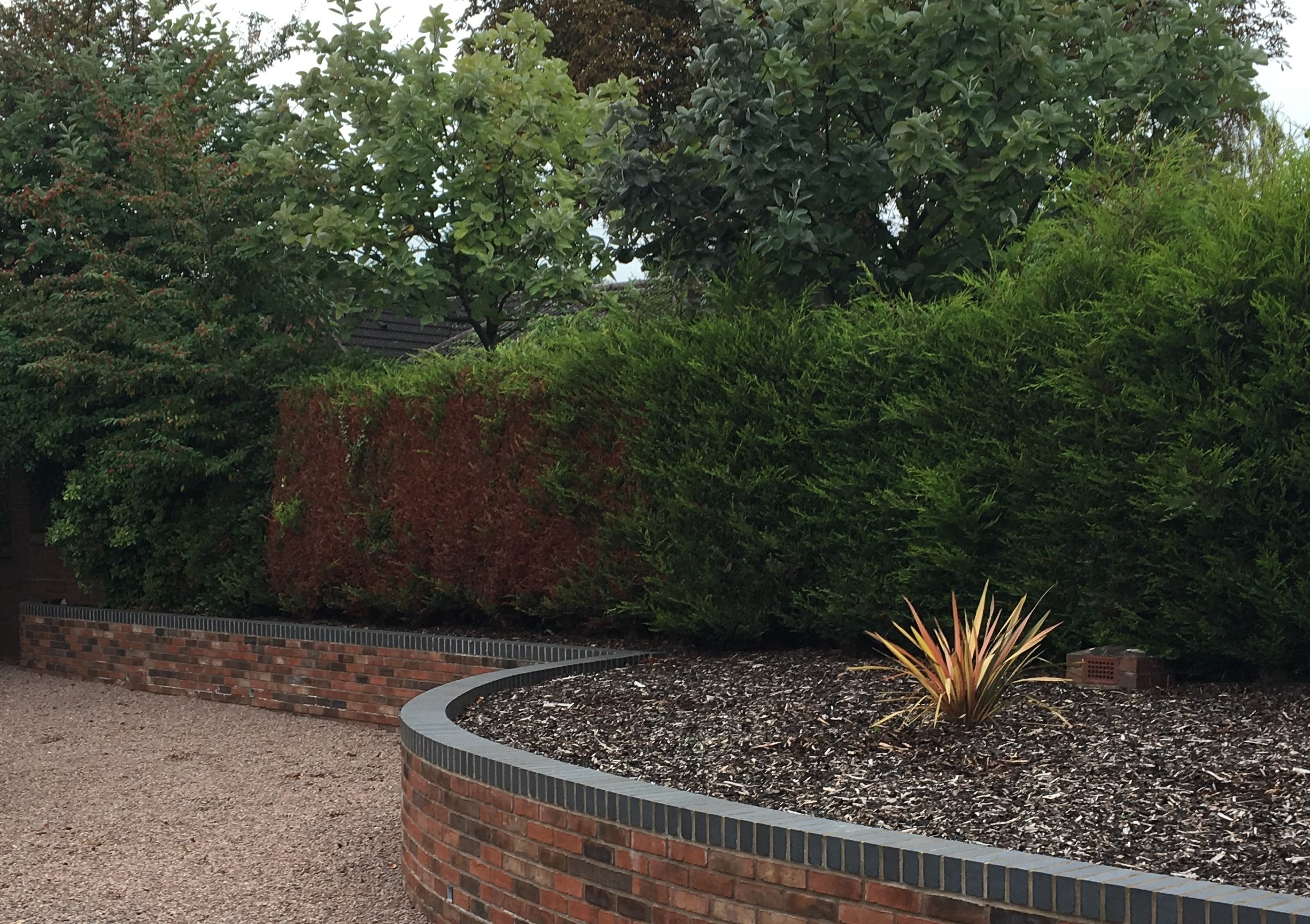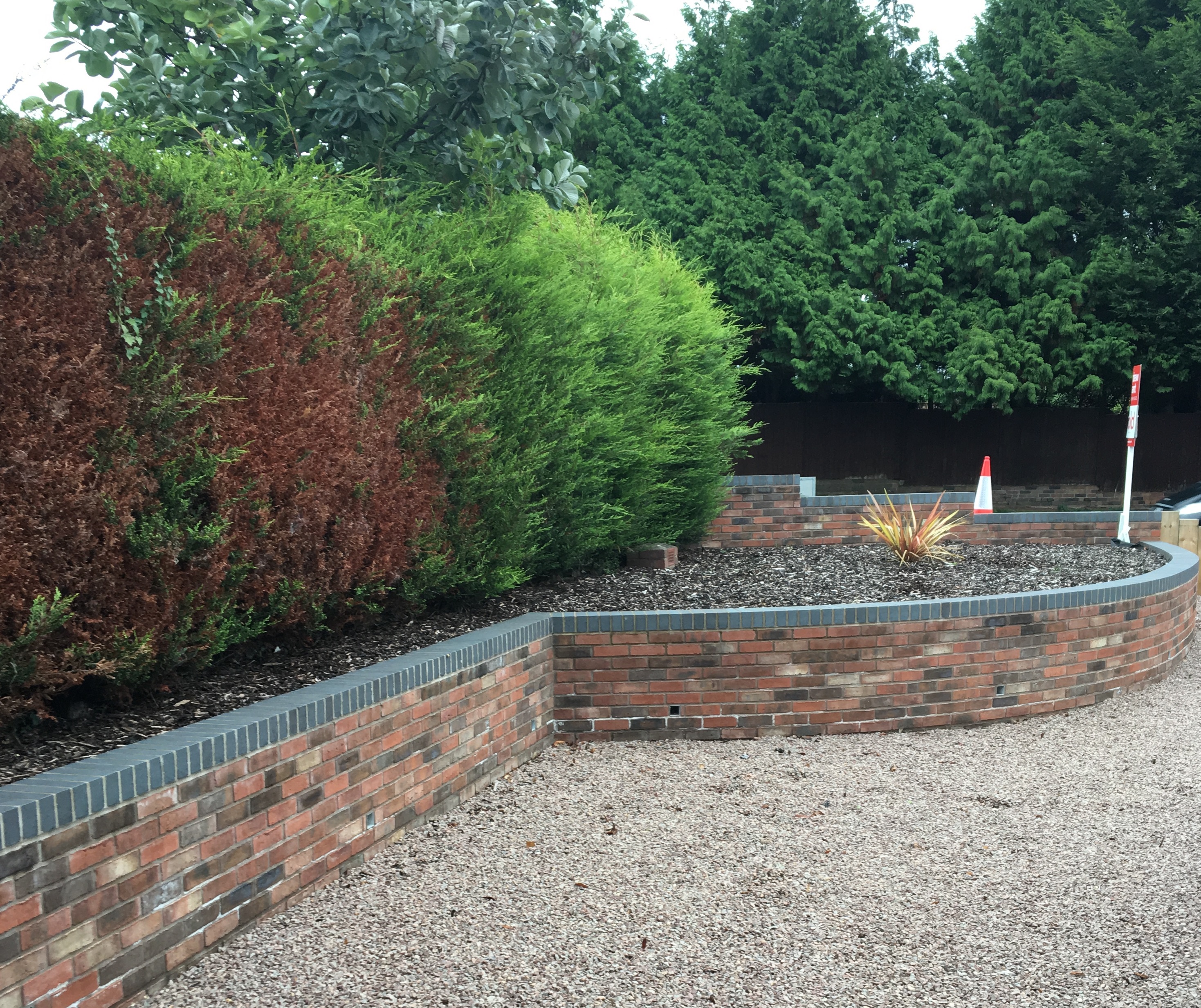This Forum will close on Wednesday 27 March, 2024. Please refer to the announcement on the Discussions page for further detail.
Replacing conifer hedge with laurel/alternative
 Windways137
Posts: 18
Windways137
Posts: 18
Hi
We have recently moved into our house but the conifer hedge in the front garden is half dead. We are looking to remove this and replace it, most likely with laurel.
Do we need to dig the entire of each conifer out including the roots or can we leave them as a stump and grow the new hedge around it?
I've been told that conifers don't regrow from the stump so will they eventually just rot away?
Thanks


Last edited: 08 February 2018 16:26:35
0
Posts
It looks as if it has been cut back too hard - they don't regrow from old wood.
If you want the new hedge to thrive, then you need to get the remains of the old hedge out. The roots of the conifers will have depleted the soil of nutrients and they will make it difficult or impossible to dig and improve the soil, which is essential, and to plant the new hedge sensibly in the available space.
They also risk becoming a host to honey fungus, which could destroy your new hedge and potentially other trees and shrubs too.
Conifer roots are usually not that difficult to remove with the use of a mattock, spade and loppers, some hard graft and a dose of persistence. I've done it myself - short, female and retired You could also, of course, hire someone with a stump grinder to remove them for you.
You could also, of course, hire someone with a stump grinder to remove them for you.
If you chooe to do it yourself, first cut off the branches and then shorten the stump, but leave about 3 foot to give you leverage. Dig around it , cutting off individual roots as you find them, and dig down until you get some movement and can rock the stump. Then you will be abe to get at the roots underneath and lever it out. A crow bar can be useful at this point.
Dig over the bed, removing as much root as possible, then add a generous amount of well rotted manure or compost to beef up the soil for your new hedge.
Hard to tell from the picture how wide the bed is, but it looks as if you will need something that can be easily clipped to keep it looking good.
Laurel is not that plant - it is very vigorous and grows fast, both high and wide. It has large leaves that look unattractive if cut, as they brown at the edges, so is ideally pruned with secateurs, which makes for a lot of work. Perhaps have a rethink, and ask on here for more specific advice
It's always hard to get the exact same shade of green when bying new plants of conifer, so I wouldn't replace the plants with new ones. I would build a trellis and cut back the branches of the conifer to the stems, using the stems for the trellis. If you leave a green twig on the stem, it will take a longer time for them to die and rot.
Below the trellis I would plant an evergreen climber.
Excellent advice from Buttercupdays ; the mattock , one tool a gardener should never be without !
A more subtle alternative to the common laurel would be Portuguese Laurel (Prunus lusitanica) ; this responds well to clipping and also comes in a fairly attractive variegated form . Worth considering I think .
Try to extract all or most of the conifer roots if you can ; sometimes it's b****y hard work , but worth it ultimately .
You'll have a fair amount of material to dispose of. As above, leave a decent length stump to use as leverage. Scrape away the soil around the roots. If the stump moves at the base when you heave on it then it's going to be easy to get out. If it's like a brick wall then you could be an hour or two with the mattock before it gives. But trust me, it WILL give. A mattock with an axe head on the back, sharpened, can be a very useful tool.
Thank you all for your advice! I will be buying a mattock...and giving it to my husband!
I will have a look at other plant options, as now that you mention it, I have seen laurels cut back and you're right in saying that it's not attractive. If anybody has any other suggestions it would be much appreciated!
The hedge is to the side of the front drive but is adjacent to a road (only to a quiet cul-de-sac) but would like something quite substantial and quick growing. There are some shrubs and small trees to the other side (not owned by us) but these are purely decorative and not sufficient as a boundary.
Holly and beech are two good hedges that can be kept neat ... not that quick growing to start with, but once they get going (after a couple of years or so) they make a decent height. quite quickly.
Gardening in Central Norfolk on improved gritty moraine over chalk ... free-draining.
Mono culture hedges can be very dull, especially with no plants in front to soften them. If you really don't want to go for a mixed, wildlife friendly hedge I suggest you look at photinia Red Robin. If you buy it as young plants - single whips if possible - it can be trained into a very decent hedge. The new spring foliage will be red and so will any new growth after a clipping.
They've used it very successfully at the Jardins d'Annevoie in Belgium
Last edited: 09 February 2018 15:09:00
Another pic here - the red tinged bits either side of the gravity fountains at the top.
Thank you! I like the look of the Red Robin, and it looks as though it can be trimmed/shaped and still look nice!